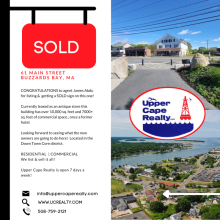Marion officials, residents discuss Town House renovation needs
Whether or not Marion residents vote in the future to renovate, repair or rebuild the Town House, the town's officials want to address any concerns now.
An engineering study completed by the architectural firm Durland Van Voorhis in 2011, estimated that the Town House, which was built in 1877 as part of Tabor Academy and later sold to the town, is in need of $5.2 million in repairs.
These repairs include a new heating system, plumbing system, sprinklers, elevator, insulation and handicap accessibility.
The building is also underutilized with roughly only half of the 20,000 square feet available being used for town offices, said Chair of the Marion Town House Advisory Committee Jay Ryder.
Charged with developing plans for renovating the building, the committee has developed several options that the town could pursue and presented those options during a public hearing on Thursday night.
The committee has proposed to make minor repairs, renovate either the entire building or just the front or back portion, sell the building to a developer or rebuild the Town House entirely on a new site or where it stands currently.
While most residents present at the hearing raised concern on how the town would finance this project, others addressed concern about preserving the historical building.
In an email to Town Administrator Paul Dawson, resident Chuck Gricus said that he believed the Town House to be suitable just as it is.
“Marion is, for all intents and purposes, a built-in community,” Gricus said. “There is not much happening. Therefore the need for a new Town House is a waste of resources.”
Resident Bill Saltonstall disagreed.
Saltonstall suggested that the most viable option would be to renovate just the front portion of the Town House and tear down the mostly vacant back portion.
Saltonstall suggested that the town offices be moved into the back portion of the building during renovations on the front portion. Once renovations were completed, the offices could then be moved back into the front of the building and the back portion could be torn down.
“Perhaps the money isn’t there for the project, but it seems to me that this is a way to go to make the building more energy efficient without losing the character of the building,” Saltonstall said.
Resident Christine Winters suggested going forward with one of the committee's options to sell the building to a developer and then the town could rent out the space. This, she said, would bring an additional taxpayer into town.
“If we lease to a developer they pay taxes,” Winters said. “I think it’s important to keep in perspective that there’s options. We would pay rent, but the developer would also be paying taxes.”
Ryder suggested hiring a project manager to better examine all of these options and develop the most cost-effective plan for the town.
In May, Ryder said Town Meeting voted against approving $140,000 to hire a project manager. Ryder lamented that the committee's research would be further along if Town Meeting had approved the funds.
“If the money was appropriated at Town Meeting, we would be halfway through a feasibility study,” Ryder said.
Dawson said the only way to move forward with the project is to continue discussions with residents and bring in a project manager.
“It’s going to take time but the building is in tough shape,” Dawson said. “It’s structurally sound but it needs a lot of things. There’s a lot of work that needs to be done and some things are more important than others.”
Ryder agreed and stressed the importance of taking action soon rather than later. Waiting any longer to take action with the building will only add to the already high cost of maintaining the building, he said.
“I think we’ve come up with viable options,” Ryder said. “After getting some feedback, we will bring four or five suggestions to the Selectmen.”
Town Meeting would have to approve any plans before the project could move forward.















